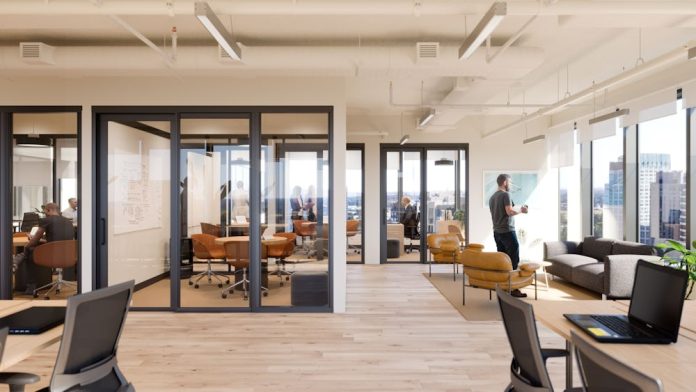Imagine walking into a corporate office where conversations hum softly in the background, focused work is the norm, and collaboration thrives. This harmonious symphony is not a coincidence but the result of intentional acoustic design. Acoustic design, the art, and science of controlling sound within a space, is pivotal in shaping the corporate workspace’s ambiance and functionality.
The science behind acoustics
Before diving into acoustic design’s impact, it’s crucial to understand the science behind acoustics. Sound travels as waves, bouncing off surfaces and interacting with the environment. The proper acoustic design harnesses these principles to create a soundscape supporting the intended workspace activities.
Creating a tranquil work environment
Strategic placement of sound-absorbing materials
Strategically placing sound-absorbing materials like acoustic panels, baffles, and curtains can significantly dampen noise and reduce sound reflections. These functional materials can be incorporated seamlessly into the office’s acoustical finishes (https://www.acousthetics.com/acoustical-finishes/).
Impact of ceiling design
Ceiling design influences how sound travels throughout a room. High ceilings can lead to sound dispersion, while suspended baffles can help control noise levels. Employing ceiling tiles with acoustic properties can contribute to a quieter and more productive environment.
Innovative use of partition panels
Modern workspace design often includes partition panels that divide areas and double as sound barriers. These panels strike a balance between open collaboration and focused work, ensuring sound flows where it’s needed most.
Boosting focus and concentration
Controlling Unwanted Noise
Unwanted noise, such as chatter from neighboring workstations or street sounds, can severely hamper concentration. The acoustic design addresses this challenge by introducing materials that absorb and mitigate disruptive noise sources.
Designing for speech privacy
Open offices encourage interaction but can compromise speech privacy. The thoughtful acoustic design uses sound masking systems and layout adjustments to keep confidential conversations private.
Fostering collaboration and communication
Open layouts vs. acoustic zones
The debate between open layouts and acoustic zones is ongoing. The acoustic design strikes a balance by creating designated zones with varying noise levels, catering to different work styles while promoting effective collaboration.
Utilizing acoustic treatments for meeting rooms
Meeting rooms often host crucial discussions. Acoustic treatments, including sound-absorbing panels and appropriate furniture, enhance audio clarity, allowing participants to communicate effectively.
The psychological effects of sound
Reducing stress and enhancing well-being
A serene acoustic environment contributes to reduced stress levels and improved well-being. Natural sounds, such as flowing water or bird songs, can be integrated to create a calming atmosphere.
Cognitive load and noise distraction
Excessive noise can increase cognitive load, leading to reduced focus and productivity. Acoustic design mitigates this by optimizing soundscapes, allowing employees to work without distractions.
Innovations in acoustic design
Integration of technology for sound management
Modern technology offers innovative solutions for acoustic design. Smart sound-monitoring systems adjust noise levels in real time, ensuring an optimal auditory experience.
Biophilic acoustic solutions
Biophilic design principles, which connect humans with nature, extend to acoustics. Incorporating natural materials and patterns into acoustic solutions fosters a harmonious connection with the environment.
Wrap up
The goal of acoustic design extends beyond noise reduction. Creating a space that promotes efficiency, happiness, and open dialogue is the ultimate objective. Strategic use of sound-absorbing materials, optimization of floor plans, and adoption of cutting-edge technology may help businesses establish productive workplaces.







